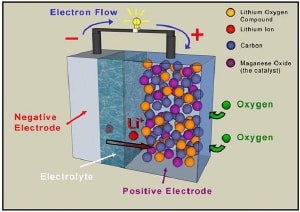Two new items that are follow-ons to the Moore’s Law for Energy thread:

A story at Technology Review about new electronics that improve the usable power from existing solar panels by 5-25%. The advance is new smarter electronics that allows for an inverter for each panel instead of one big one for the whole system. It’s a bit of a bat-wings phenomenon, where heavier use is made of a rapidly-improving technology (in this case, digital electronics) in one system component to take up the slack in the others.
The second item is a new light-powered H2O dissociation catalyst featured in this Time story. (More in depth from this TR story last year, and the paper in Science.) It uses “cheap, abundant” cobalt and phosphate instead of platinum — another step in the substitution of knowledge for rare, expensive natural resources as I described here.

The same effect is seen in the substitution of porous carbon for lithium cobalt oxide in the STAIR air-breathing battery, which is billed as “A new type of air-fuelled battery could give up to ten times the energy storage of designs currently available” in this EPSRC press release. (H/T Azonano)
… and yet one more new avenue in lithium batteries comes from replacing transition metal oxide cathodes with a nanostructured carbon-sulfur composite, cf this Eurekalert story.